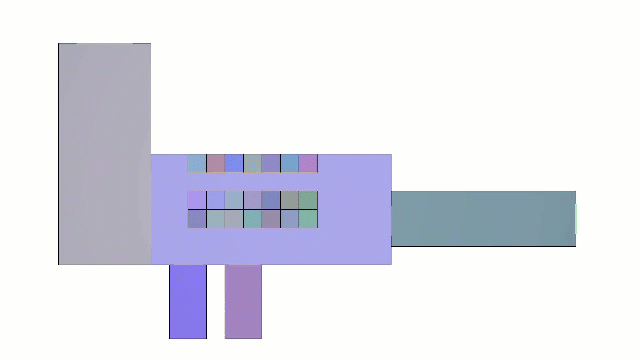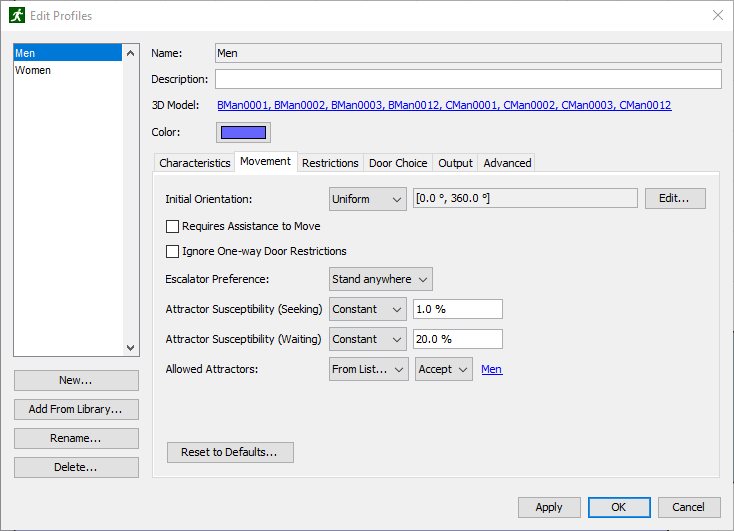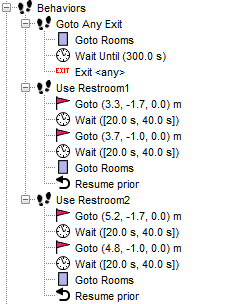Attractors Preview for Pathfinder 2021.3
Pathfinder 2021.3 introduces Attractors as a new way to allow occupants to interact with objectives outside their main behavior.

Perhaps some airline passengers are tempted by a café on their way to their gate, museum attendees are swayed to visit the gift shop, or subway commuters have a few spare minutes to use the restroom before their departure. In each of these scenarios, there is some percentage of the population which will be attracted to a secondary objective.

The attractor itself defines the source upon which occupants may change their behavior, the awareness occupants will have of the attractor, and what behavior to take once they have committed to the attractor. In this example, we will have occupants flow into a waiting room and take seats until they are allowed to exit through the other side. During this wait, some occupants may take advantage of the restrooms connected to the waiting area.
The attractor's awareness can be set to one of four types: line of sight, same room, specified room, and global. In the bathroom scenario we have defined the two attractors, one for each restroom, with a specified room awareness. Once occupants are within the waiting room and seating area, they are aware of these attractors.

Once occupants are aware, they will only engage with the attractor based on its influence and the susceptibility defined by their profile. These are both defined by percentages which combine to give a probability that an individual occupant will engage with the attractor. There are separate susceptibility parameters for seeking and waiting behavior. Profiles can ignore specific attractors entirely, and in this situation there are two profiles based on their restroom preference.

Now that an occupant has engaged with an attractor, the behavior selected in the attractor will define what they do next. Attractors have a default "wait" behavior to support simple situations. Alternatively, and in this example, the attractor can trigger any other behavior defined in the model. Here, a slightly more nuanced behavior defines a waypoint and wait step each for the toilet and the sink. The occupant then returns to the seating area to finish waiting. Behaviors now have a new final step option, "Resume prior", which enables the attractor to be a secondary objective to the main behavior of exiting or seeking refuge.